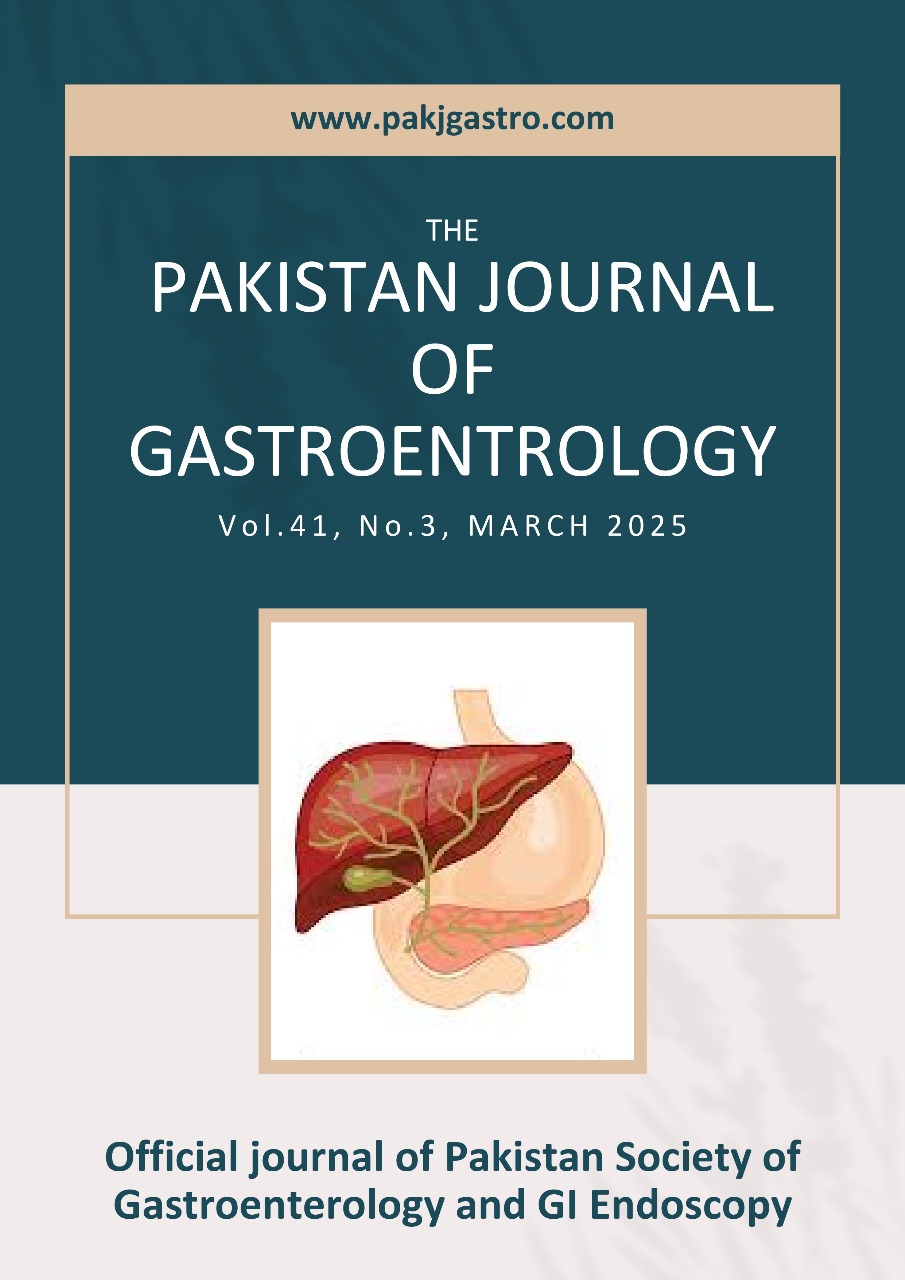The Impact of HCV eradication on HBAIC in Genotype 3 Chronic HCV Diabetic Patients
DOI:
https://doi.org/10.63521/pjg.41.3.2025.7Abstract
ABSTRACT
Objective: Hepatitis C Virus (HCV) is a global health concern. WHO estimated that it affects a 170 million people worldwide. In Pakistan, 6.8% of adult population exhibits presence of active disease. With the rise of DAAs especially Sofosbuvir and Velpatasvir the ETR and SVR is remarkable. Patients who secure seroconversion following DAA treatment experience a drop in their HOMA-IR levels, in contrast to those who don't. It means that there are metabolic benefits of HCV eradication. Based on this hypothesis we evaluated the benefit on HBAIC in patients achieving ETR.
Methods: The study sample comprised of 100 type 2 diabetics who attended Gastroenterology clinic at GTTH, a tertiary care hospital in Lahore for treatment of HCV infection. All the confirmed type 2 diabetes cases on any therapy were included in the study sample. Data was analyzed using SPSS Statistics version 24.
Results:
Out of study sample of 100 patients, 100% achieved an end of treatment response (ETR). In our study, mean difference in fasting blood sugar (FBS) from baseline to ETR was found to be a decrease of 48.70 ± 22.20mg/dL (p Value<0.05). Similarly, the mean difference RBS over the same duration showed a reduction of 98.00 ± 39.70 mg/dL (p value <0.05) Quite interestingly, HbA1c levels also showed a decline of mean difference of 1.10 ± 0.82% from baseline to the 3 months mark (p value<0.05)
Conclusion:
Successful eradication of HCV does lead to improvement in Diabetes control in type 2DM.
Downloads
Published
Issue
Section
License
Copyright (c) 2025 Taha Tariq, Ayesha Waheed, Usman Akram, Umer Hayat (Author)

This work is licensed under a Creative Commons Attribution 4.0 International License.
Submission declaration
Authors retain the copyright to their work and grant the Pakistan Journal of Gastroenterology (PJG) the right of first publication under a Creative Commons Attribution 4.0 International (CC BY 4.0) license. This license allows others to share, adapt, and reuse the work for any purpose, including commercial use, as long as appropriate credit is given to the original authors and the journal.
By submitting a manuscript, authors confirm that the work has not been published previously (except as an abstract, lecture, or academic thesis), is not under review elsewhere, and has been approved by all authors and relevant authorities. Once accepted, the article will be openly accessible under the CC BY 4.0 license, ensuring wide dissemination and reuse with proper attribution.









